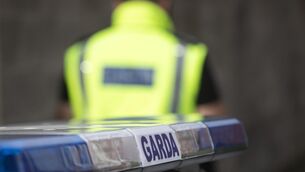Man does not accept seized and slaughtered horse had been wandering on road, court hears

A man whose horse was destroyed by a county council over unpaid impounding fees did not accept the animal was found wandering on a public road, the High Court has heard.
Edward McDonagh said he did not believe Galway County Council's claim the stallion, "Chief of Colours", was wandering on Headford Road, Galway, on February 11, 2018, when it was seized.
It was later destroyed after Mr McDonagh refused to pay a €3,000 impounding and vet's fee charge.
The vet said the horse was in a poor condition, shivering and suffering from hypothermia with a possible respiratory problem. Mr McDonagh claimed the horse was shivering because it was frightened after being seized.
Last month, Mr Justice Garrett Simons ruled the council "acted precipitously" when it destroyed the horse rather than deal with the €3,000 fee by way of sale of the animal or debt collection. The inclusion of an unlawful €589 administration fee legally impaired the entire €3,000 demand, he said.
The judge adjourned to today the issue of what compensation Mr McDonagh should receive in order to hear evidence on the valuation of the horse.
The council's expert put it at €1,500 whereas Mr McDonagh's vet told him it was worth up to €35,000 for its breeding value.
Mr Justice Simons said he would try to give his decision on compensation before the end of July.
Mr McDonagh, a settled Traveller father-of-eight, of Bothar an Coiste, Headford Road, Galway, told the court he intended to use the horse for breeding purposes because of its pedigree.
The progeny would have been used for sulky racing as piebald/skewbald horses such as this fetched higher prices in sulky racing.
The horse only had five "mating certs" because, Mr McDonagh said, he did not have the facilities for breeding but he had hoped, before it was destroyed, to use the facilities of a man he knew with a stud farm.
He said he had paid €5,000 in 2013 to a man in Coalisland, Co Tyrone, for its mother when she was in foal with Chief of Colours.
It was kept in a field across the road from his home for three years and it was well secured. He did not believe it was picked up on the public road and found it a "coincidence" that the council impounding unit would have been there on the one day he was supposed to be on the road when he had never been on it before.
He told his counsel, Micheál P O'Higgins, the destruction of his horse "broke my heart". The council "showed me no respect" when he made enquiries about where it had been taken until his solicitor got involved.
He did not have any receipt for the purchase of the horse's mother but he later got a "horse passport" for it from the Standardbred and Trottinghorse Association of Great Britain and Ireland (STAGBI).
Under cross-examination by Stephen Dodd BL, for the council, he said he did not know STAGBI passports were not recognised by the Department of Agriculture. He said STAGBI told him the passport was good.
He agreed he also did not have a separate licence to have a horse in a controlled area. He also agreed the field in which the horse was kept was not registered as required by law. He said he knew horses were in the field for 10 years.
George Candler, auctioneer and valuer in bloodstock livestock, said having examined the documents of the horse he valued the animal at €1,500 because it did not meet the required standards for breeding purposes. Mr Candler was puzzled by the €35,000 valuation put on it by Mr McDonagh's vet.











